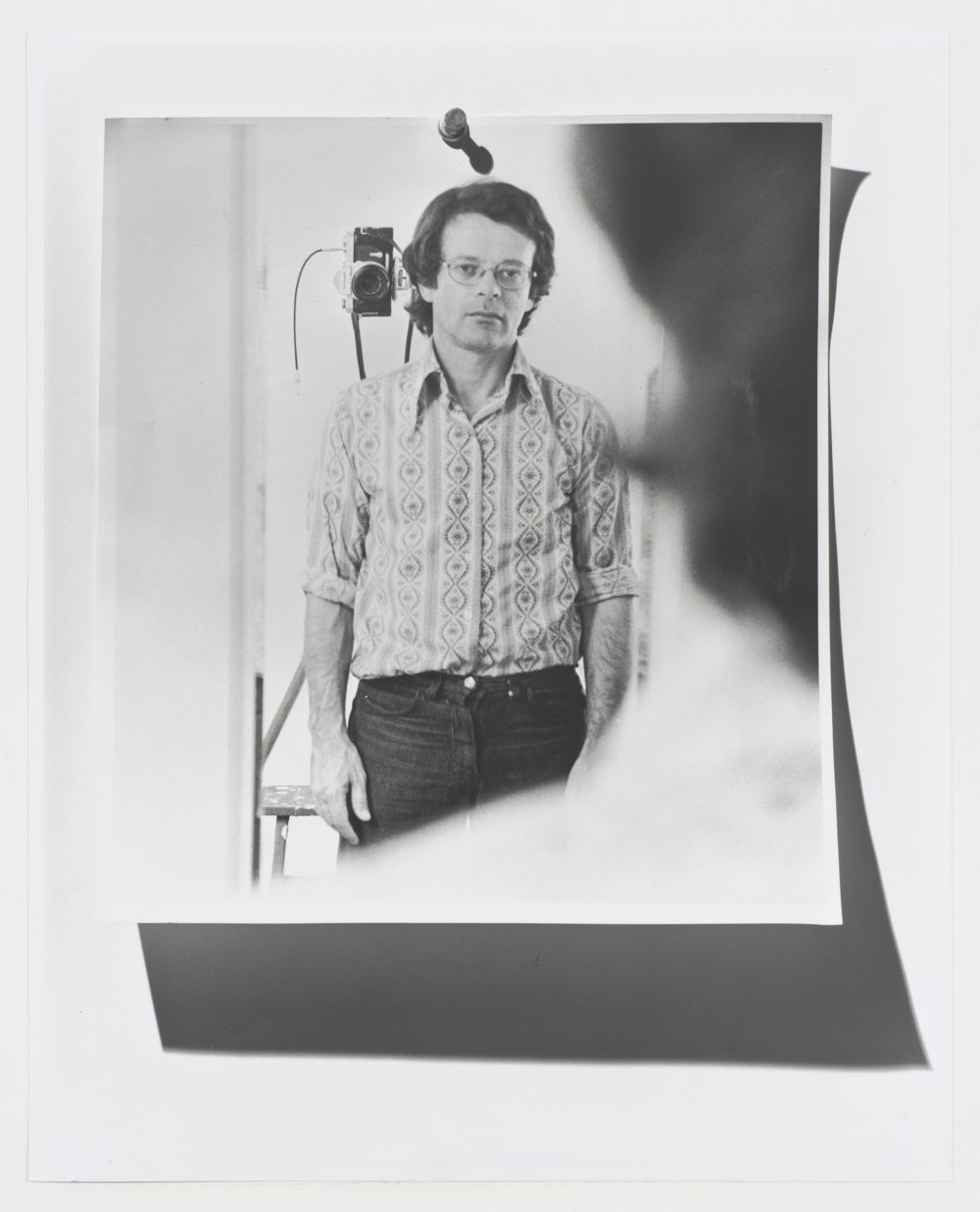 Lew Thomas, “Self Portrait #2,” (1972). Courtesy Phillip Martin Gallery
Lew Thomas, “Self Portrait #2,” (1972). Courtesy Phillip Martin Gallery
Lew Thomas, an artist whose photographic experiments created new possibilities for Conceptual art, has died at 88. Philip Martin Gallery in Los Angeles, his longtime representative, announced the news on Thursday in an email.
Thomas’s work was, on the surface, quite simple. Following the birth of his daughter, he created BLACK & WHITE (1971), a vertical diptych in which the word “black” is printed in white on a black background, which hangs above the word “white,” printed in black on a white background. The piece would prove to be a breakthrough and emblematic of his work to come, like OPENING & CLOSING THE GARAGE DOOR (1972), which features two vertical photo strips showing a figure performing that very act.
But Thomas was interested in more than just a clever juxtaposition of opposites. His work was undergirded by his studies in structural linguistics, as well as his own observations of his daughter’s speech development. His art, in essence, was a meticulous pursuit of creating pictorial responses to structuralism, highlighting how words’ meanings are formed through their relationship with other words, without which they would effectively have little or no significance.
Another key interest in Thomas’s art was the passage of time, and how devices like clocks mark our relationship to it. In TIME EQUALS 36 EXPOSURES (negative and positive sections), from 1971, Thomas created a set of 36 photos of a black clock shot at various times during the day, which he accompanied with 36 images of a white clock taken at the same times. In LIGHT-ON-FLOOR (1973), he again used a six-by-six grid of 36 images, this time showing the passing of a day as light shifts across a linoleum floor.
In 1997, former Berkeley Art Museum director Larry Rinder called Thomas “one of the most important and yet least known of contemporary Bay Area artists.” He added, “Mr. Thomas’s work . . . was motivated by an interest in using photography as a means to express fundamental structures of time, space and meaning while also expressing the essential properties of the photographic medium. Rather than being concerned with the aesthetic (that is aesthetic in the conventional sense of ‘beauty’) or psychological content of the image, Thomas emphasized the photograph’s capacity to provide simple evidence of underlying structures.”
Lew Thomas was born in 1932 in San Francisco, and as a child developed a love for books and language, which would eventually impact his art practice. He attended the University of San Francisco, and graduated with a degree in English literature in 1960.
In 1964, he began managing the Patrons of Art and Music Bookshop at the Legion of Honor, which he ran until 1982. While there, Thomas began to develop his interest in both French Structuralism and photography, and soon enlisted Joe Schopplein, who photographed exhibitions for the de Young Museum, into teaching him to shoot and print photographs.
Around this time, Thomas also became an influential publisher. In 1976, along with Donna-Lee Phillips, he founded NFS Press, which published books on Bay Area photographers active in the 1970s, including a close associate of theirs, Hal Fischer.
Simultaneously, Thomas’s artwork began to be shown at major venues, like the Oakland Art Museum in 1972, the de Young Museum in 1974, the Museum of Modern Art in New York in 1978, and other venues. More recently, his work and that of his Bay Area colleagues has enjoyed a revival. In 2020, the San Francisco Museum of Modern Art mounted an exhibition looking at the 1970s work of Thomas, Phillips and Fischer, titled “Thought Pieces.” The trio will also be the subject of an exhibition at the Addison Gallery of American Art in Andover, Massachusetts, later this year.
These exhibitions look at how Thomas used photography to ponder the significance of things close at hand, something that was at the center of his practice. Writing in his 1978 book, Structural(ism) and Photography, he said, “[I realized] I did not need to go somewhere to take a photograph. In fact all the content I would ever need for photography was already with me.”
Source link : https://www.artnews.com/art-news/news/lew-thomas-photographer-dead-1234602903












